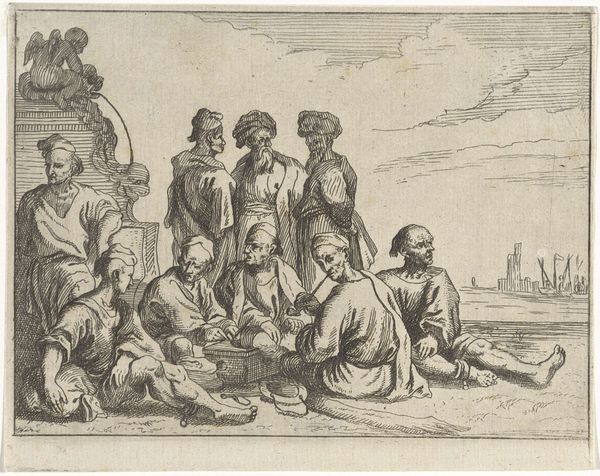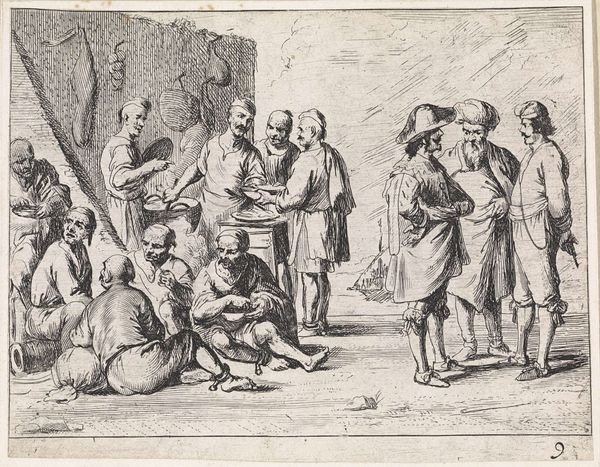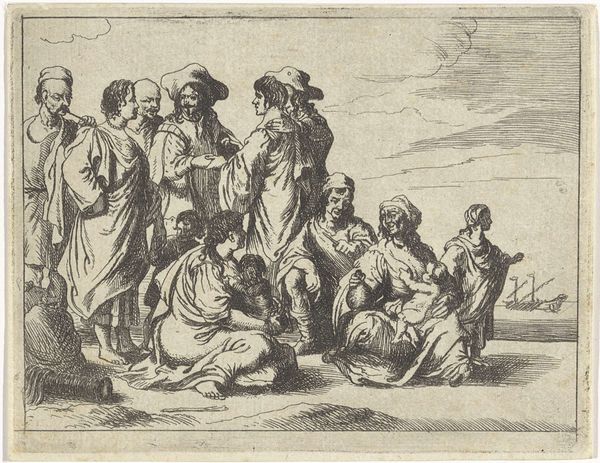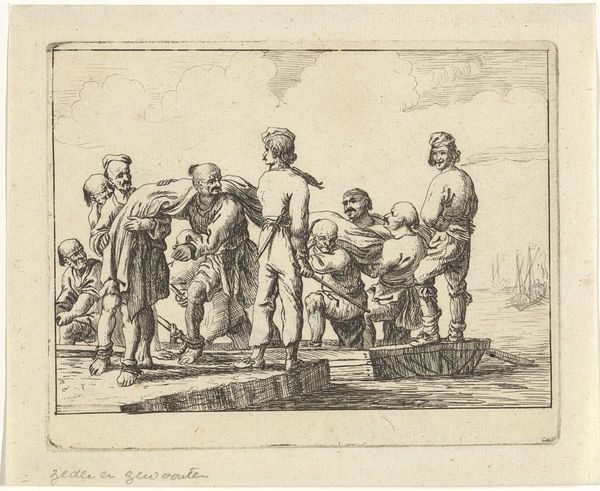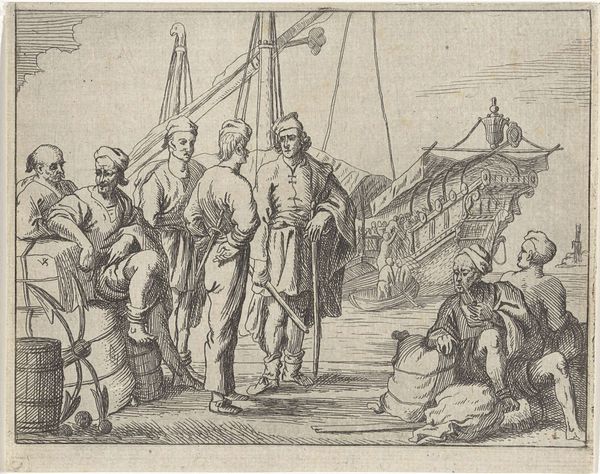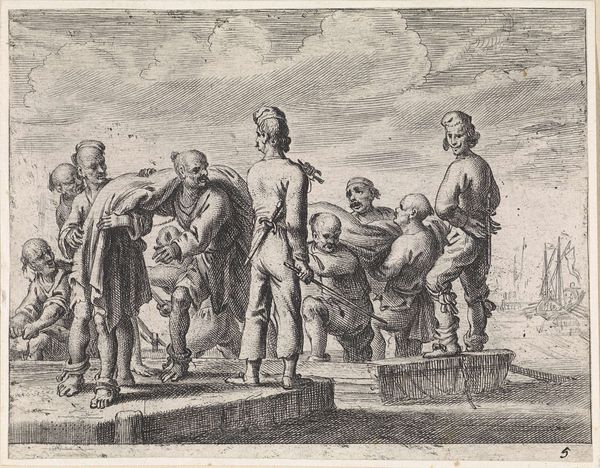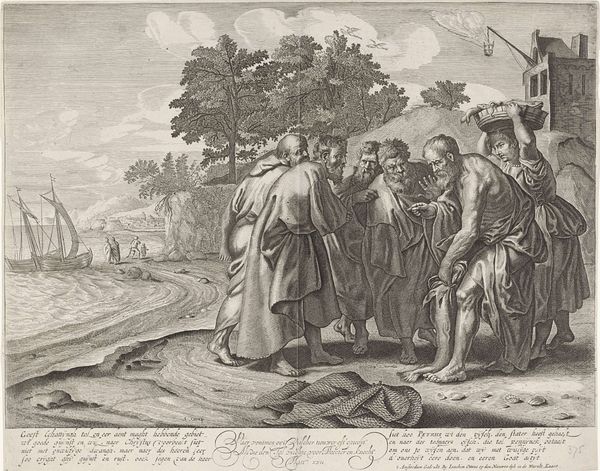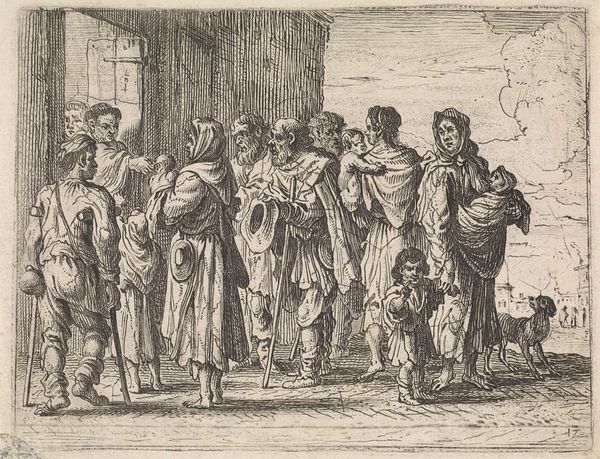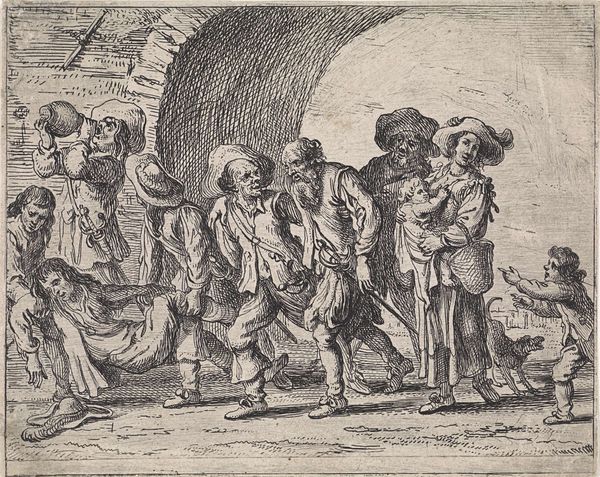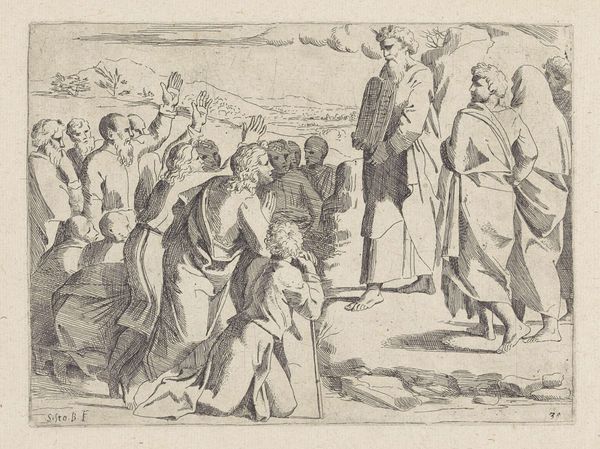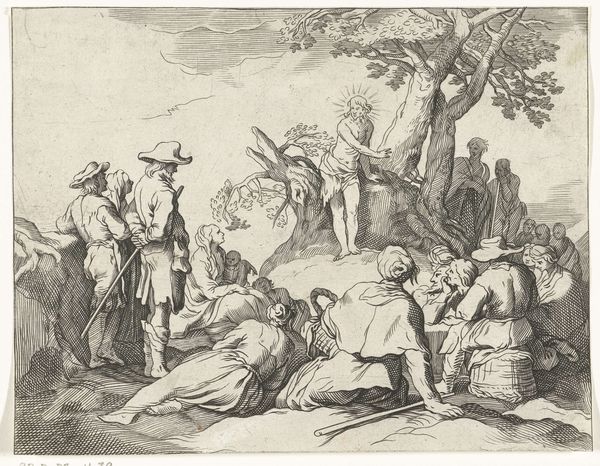
print, etching
#
baroque
# print
#
etching
#
landscape
#
figuration
#
islamic-art
#
genre-painting
Dimensions: height 109 mm, width 142 mm
Copyright: Rijks Museum: Open Domain
Curator: Cornelis de Wael created this etching in 1647, titled "Islamic Galley Slaves Resting by a Fountain." It offers us a glimpse into a specific historical and cultural encounter. Editor: The first thing that strikes me is the composition; it’s so densely populated. There’s a palpable sense of exhaustion hanging in the air, underscored by the hard lines of the etching. Curator: Exactly. De Wael, working in Genoa, was well-positioned to observe the realities of Mediterranean trade and naval power. These men, likely captured in naval conflicts, represent the labor force that powered the galleys. Etchings like this were not merely artistic endeavors, but also commodities traded and consumed within a European market fascinated by the ‘exotic’ other. Editor: So, we see an instance of labor on the periphery represented in this particular medium made accessible through a global system that reproduces that very labor—it raises uncomfortable questions about representation and spectatorship. Did de Wael own slaves himself? How did the social conditions of production impact this portrayal? Curator: Those are critical questions to consider. The image exists within a network of power, where the exoticization of the enslaved is a form of control, even consumption. But let’s also examine how these galley slaves are depicted, at ease, almost dignified. The fountain, for instance, acts as a shared resource, highlighting their communal existence despite their captivity. Editor: I appreciate you pointing that out. Looking closer, I’m curious about the material reality. The print itself; its scale meant for relatively easy distribution, almost like a postcard of the "Orient," sold to wealthy patrons. But at what cost to the figures themselves and at what remove from the very harsh, visceral work that sustained that society? Curator: Indeed, that interplay between the observed "reality," the artist's interpretation, and the marketplace realities makes this piece a window into the complexities of the Baroque era's entanglement with slavery, power, and cultural exchange. Editor: So it becomes more than just an image; it’s a material object with its own complex history shaped by colonial expansion, labor exploitation and even artistic ambition. This image really reminds us of the long legacies of power inherent within art and representation.
Comments
No comments
Be the first to comment and join the conversation on the ultimate creative platform.
